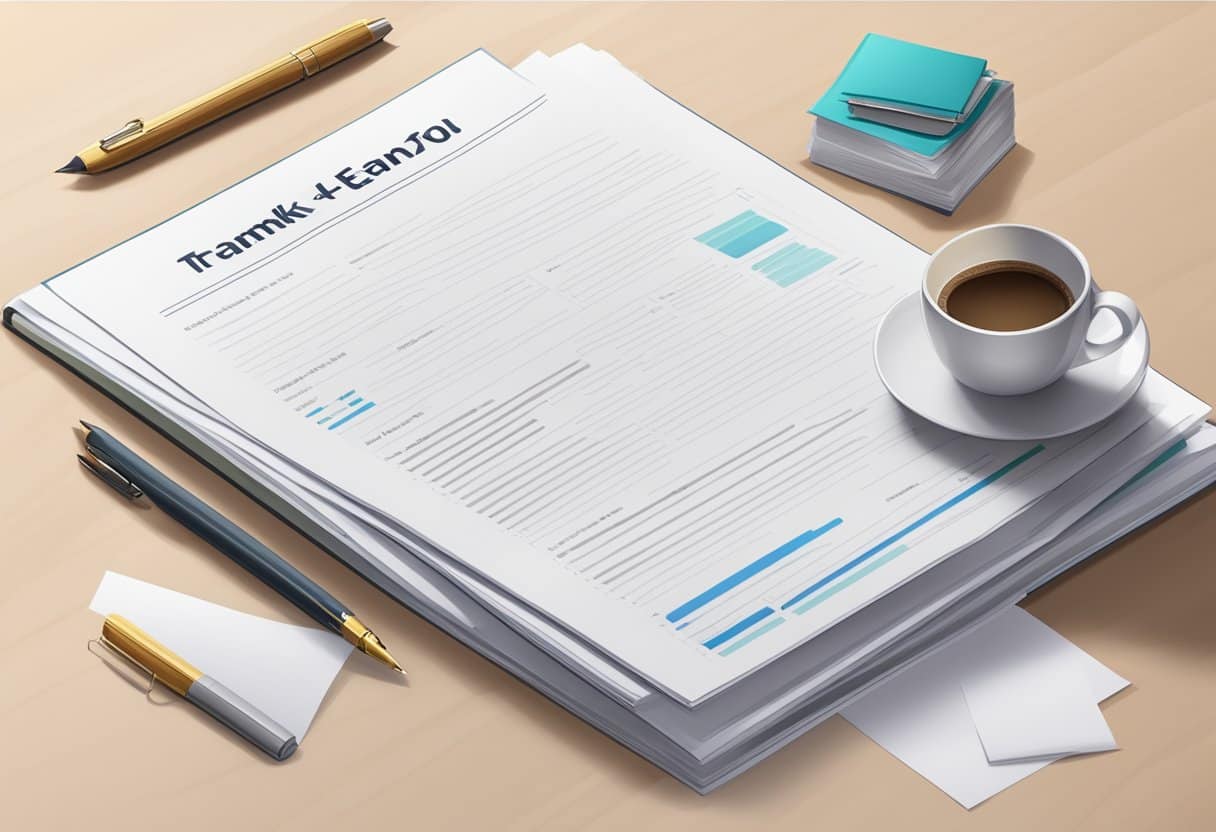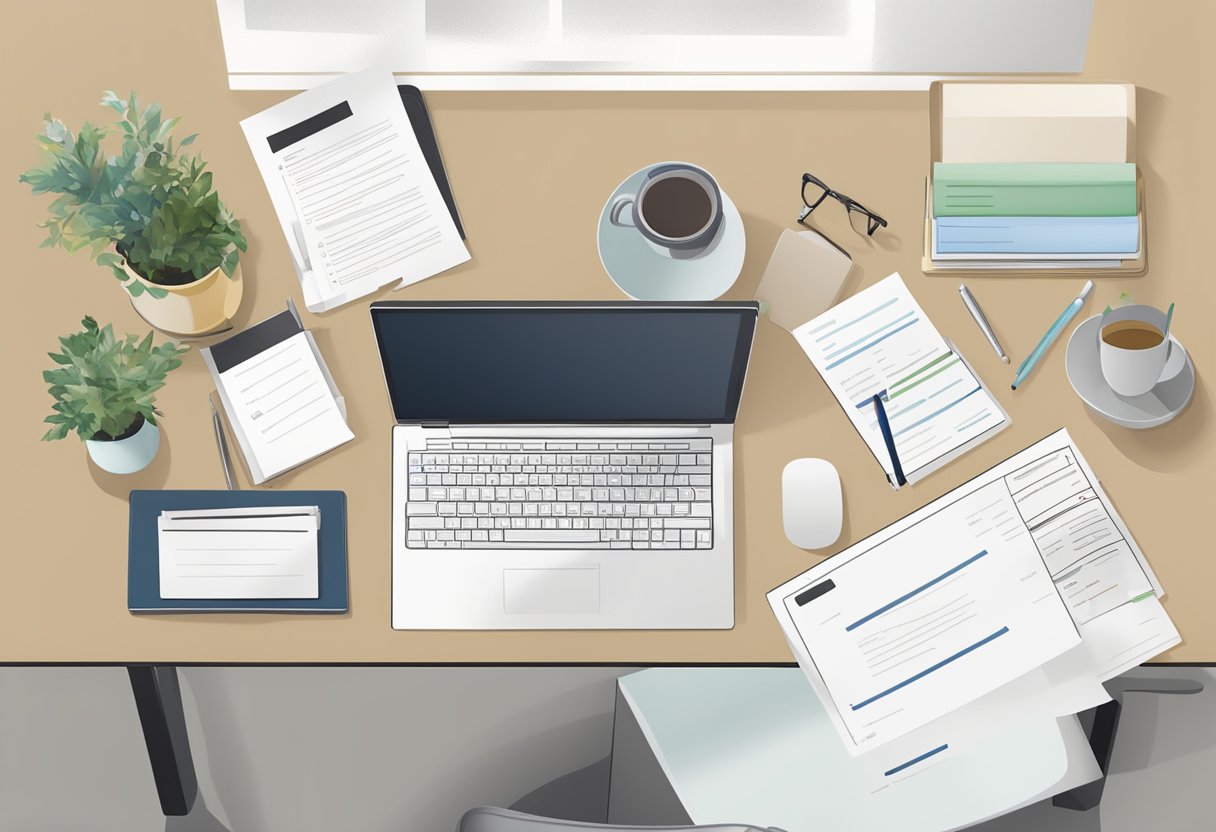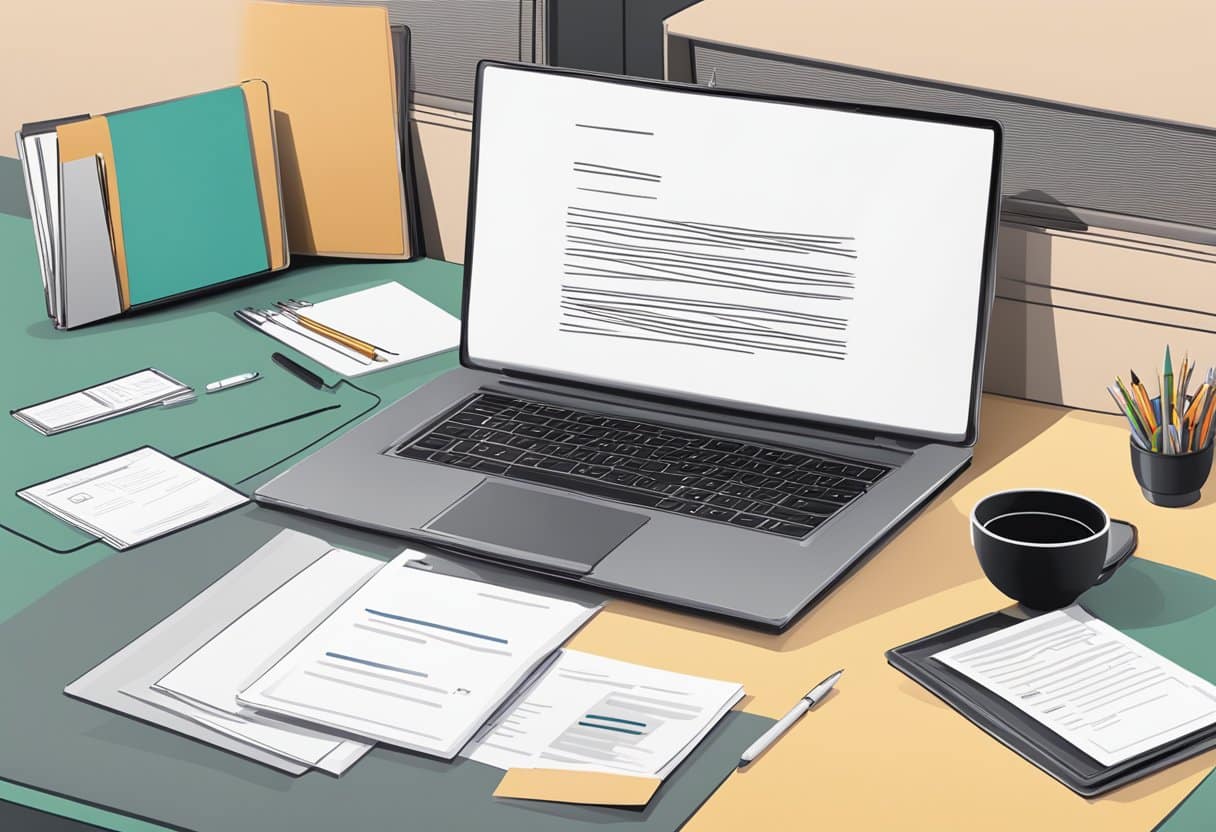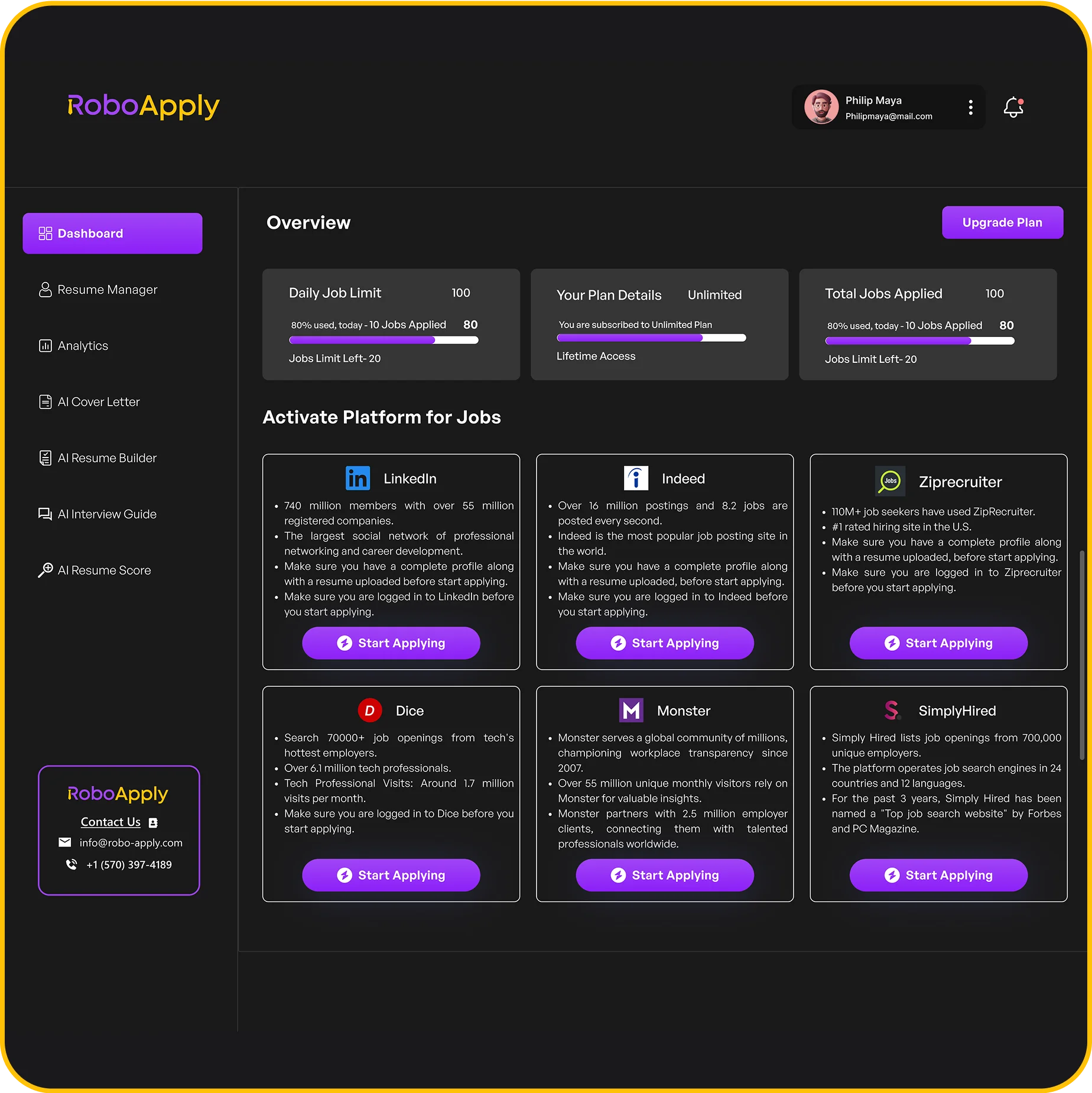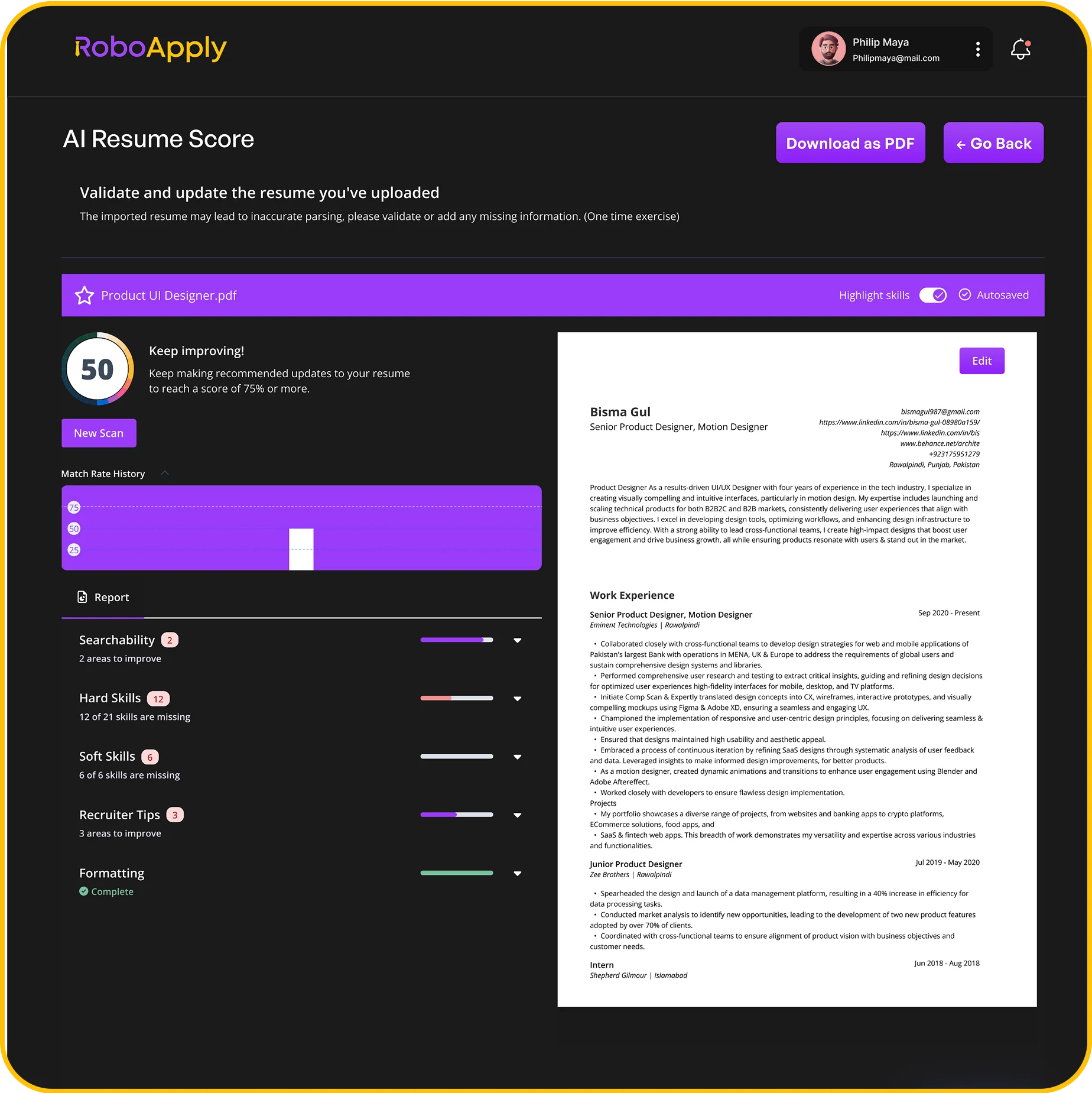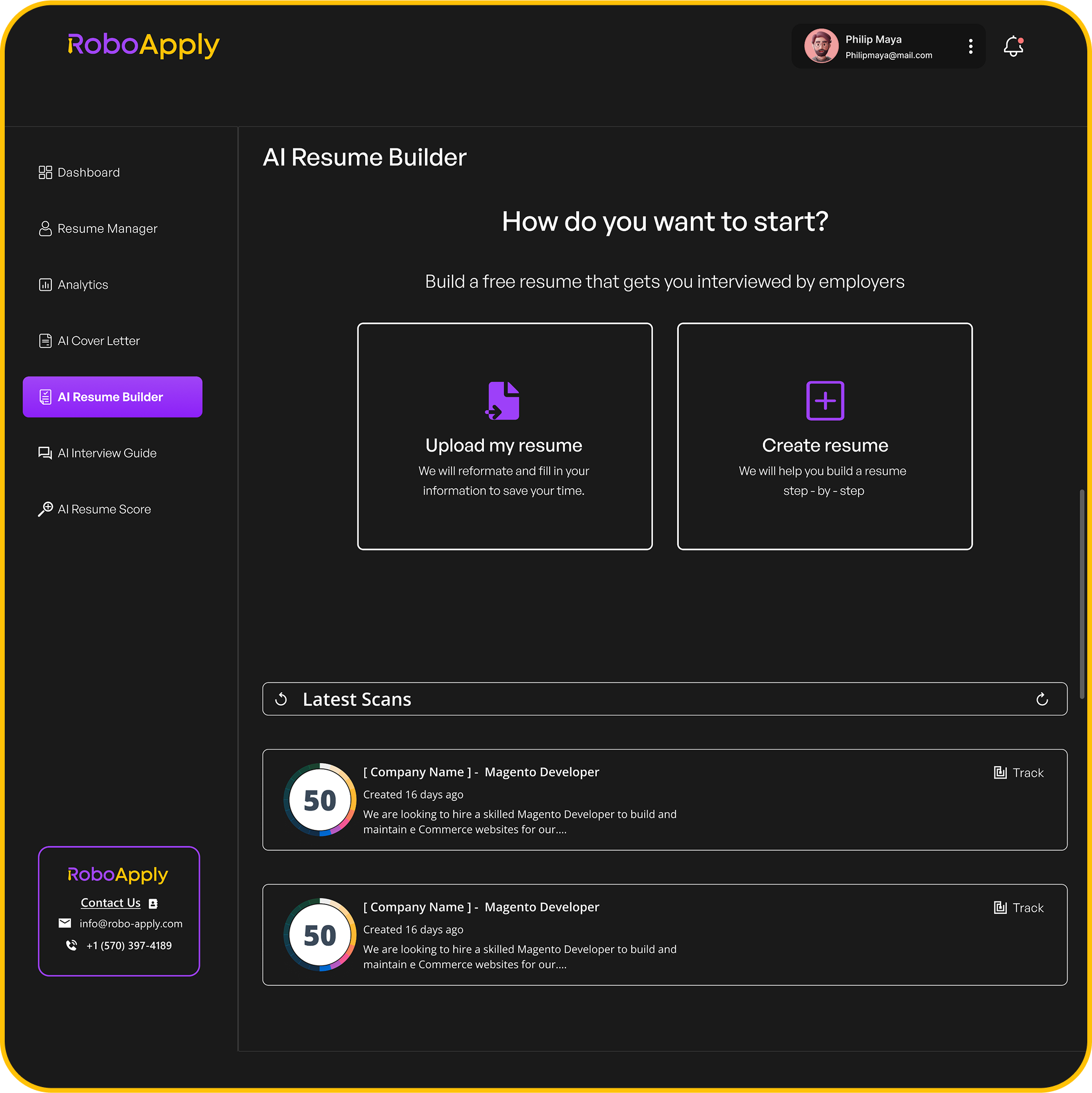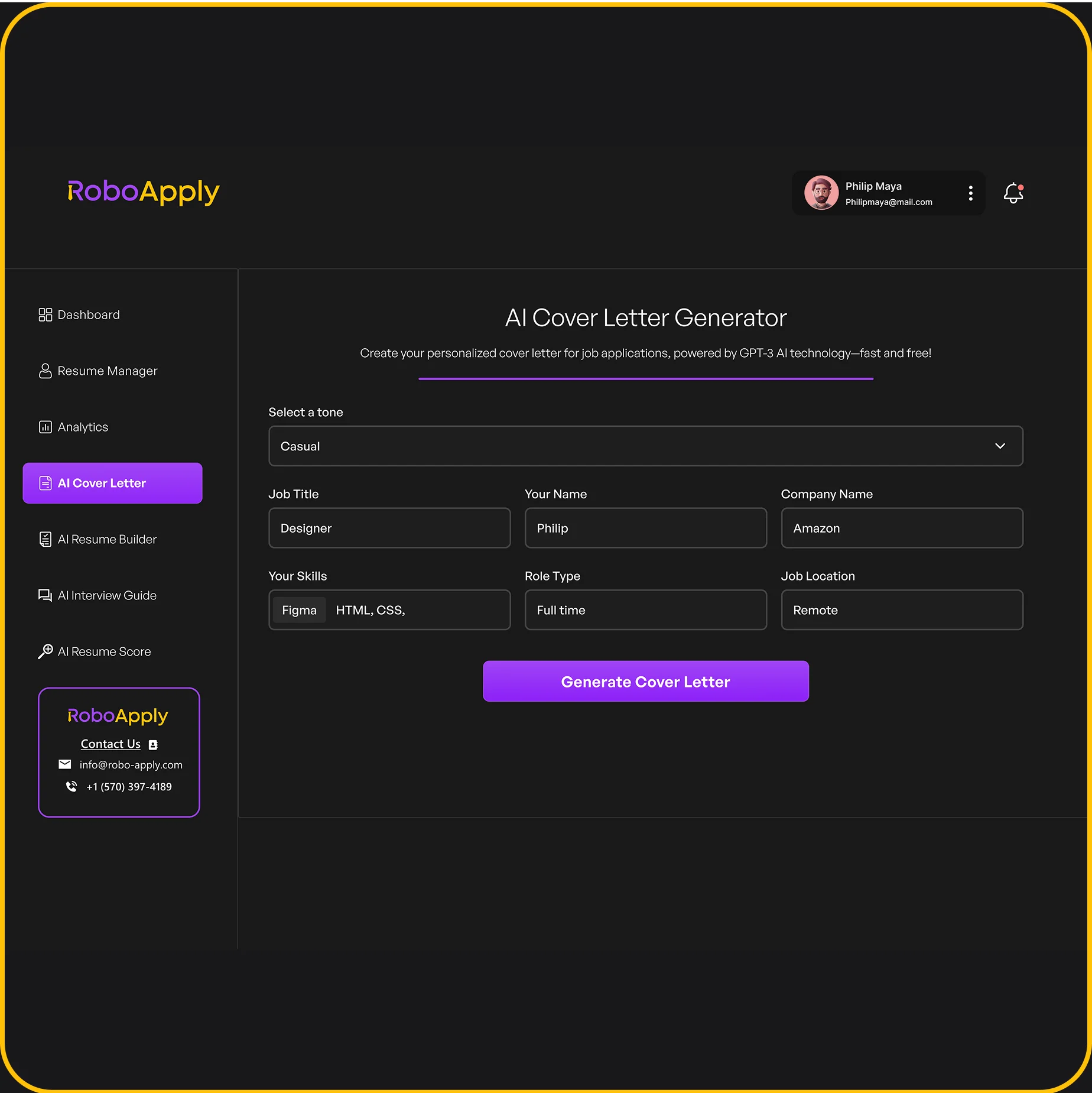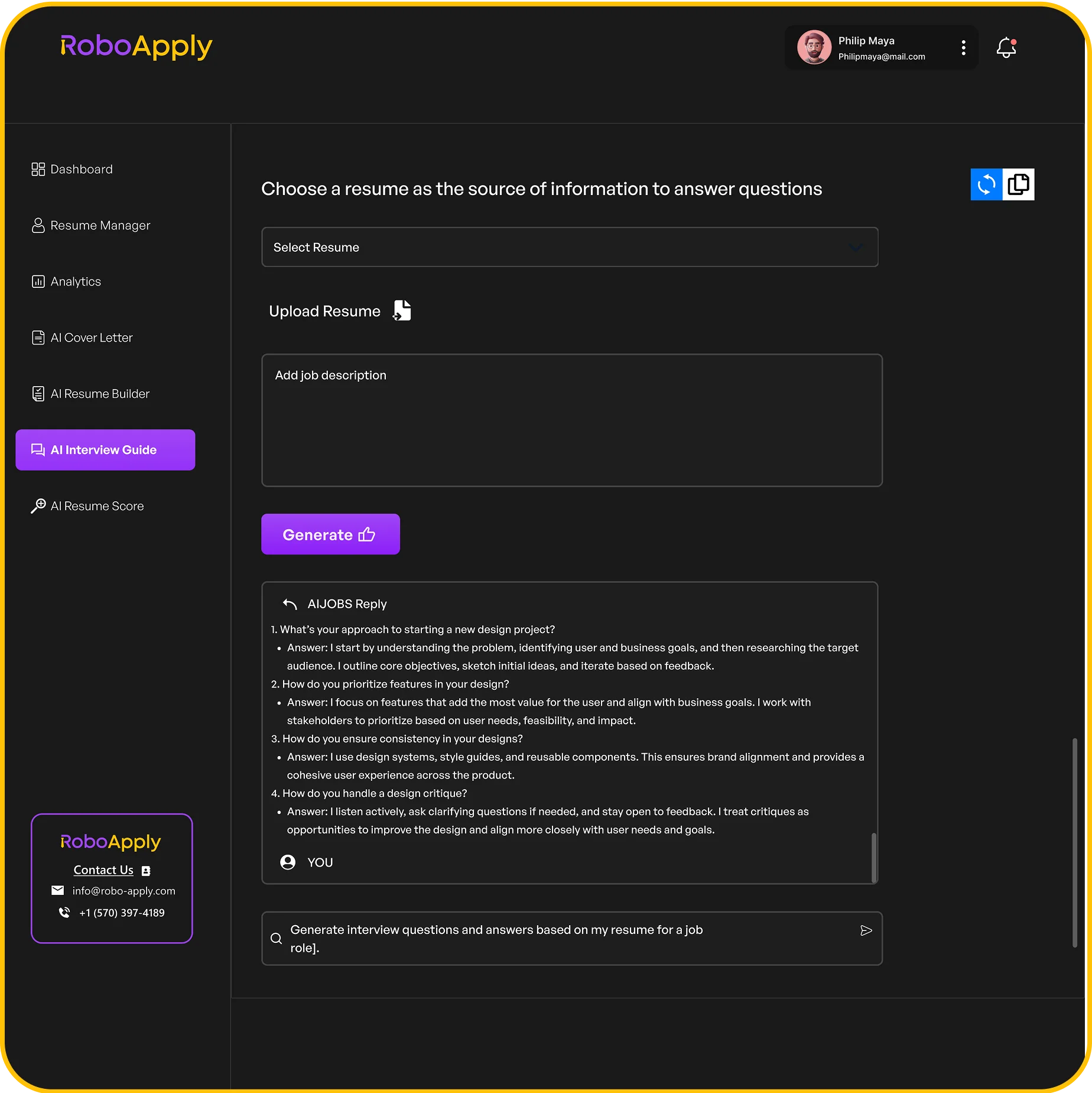Every step in the job search—from sending in a resume to following up with a thank you letter—shows employers professionalism and commitment. Knowing how to craft each document well can really make a difference in getting noticed and landing interviews. The resume should spotlight your best skills and experiences. The cover letter introduces you as an applicant and gives a sense of why you’re a great fit for the role.
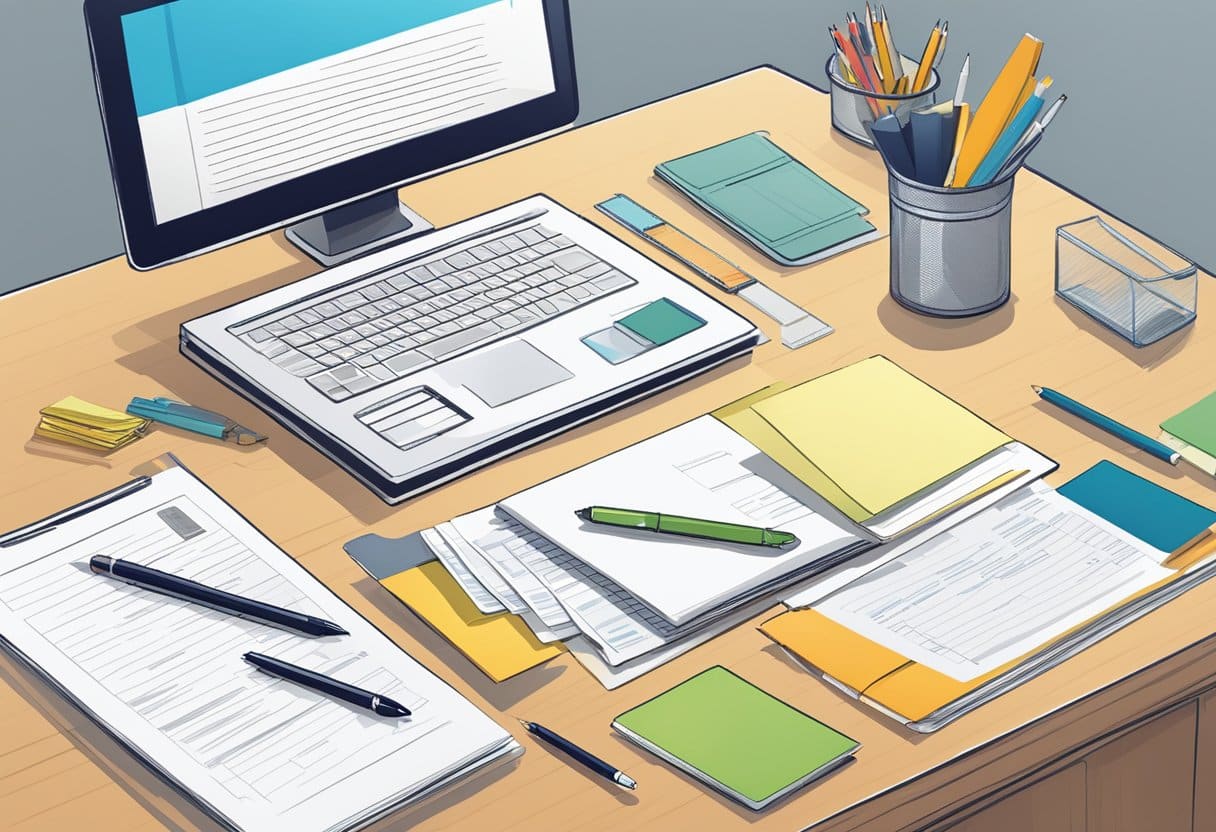
Writing samples are often required, especially for jobs in law, communications, or writing. These samples show how well you can communicate and solve problems in real-world situations. After an interview, sending a thank you letter shows appreciation and can set you apart from other candidates. Tools like RoboApply can speed up these steps—helping with resume scoring, building strong cover letters, and managing job applications across sites like LinkedIn and Indeed. Try RoboApply for free.
Crafting a Standout Resume
A strong résumé stands out by presenting your skills and experience in a way that’s clear and easy to follow. The best résumés grab attention by matching the job’s needs, using keywords, and showing real impact—sometimes it’s the little details that count.
Formatting and Structure
A résumé should have a clean format with clear headings and plenty of white space. Simple designs work best—no need to get fancy. Start with your contact info at the top, then add a summary or objective, work experience, education, and skills.
Jobs should be listed in reverse chronological order so your most recent roles are front and center. Bullet points under each job help break up the text (nobody wants to read a wall of words). If you’re just starting out, keep it to one page; if you’ve got more experience, two pages is fine.
Use bold or italics to highlight job titles, company names, and dates. Watch out for alignment and margins—little formatting issues can make things look sloppy. Save your résumé as a PDF to keep things looking the way you want.
Highlighting Relevant Experience
Each section should focus on experiences that actually fit the job description. Don’t just send the same résumé everywhere. Pull in details from jobs, internships, volunteer work, or even school projects if they’re relevant.
If you’ve got a bunch of similar experiences—like leadership roles or technical projects—group them together so they’re easy to spot. When a job asks for teamwork or communication, give specific examples, like leading a group project or training new hires.
It’s smart to use keywords from the job posting because a lot of companies use software to screen applications. Adjust your résumé so those skills and experiences pop out.
Showcasing Accomplishments
Hiring managers want to see what you’ve achieved, not just a list of your duties. Turn tasks into results—action verbs and outcomes are your friends. For example, instead of “responsible for organizing files,” try “organized office filing system, reducing retrieval time by 30%.”
Numbers speak louder than vague claims. Things like “increased sales by 15%,” “trained 5 new team members,” or “managed a budget of $10,000” help your résumé stand out. If you’ve won awards or gotten great feedback, mention it.
Need more ideas? RoboApply for free offers feedback and tips to help you improve your résumé.
Tailoring Your Résumé to the Job Description
Before you hit submit, compare your résumé to the job description. Employers look for specific skills and phrases. Go through each bullet under your work experience and ask yourself if it matches what they want.
Make sure the key skills and responsibilities from the posting show up in your résumé. If they want “project management,” and you’ve got it, use that exact phrase. Skip unrelated experience unless it shows something unique or transferable.
Tools like RoboApply can speed up this process by checking how well your résumé matches different jobs and flagging missing keywords.
Try RoboApply for free to score your résumé and boost your chances on sites like LinkedIn and Indeed.
Writing an Impactful Cover Letter
A good cover letter grabs the hiring manager’s attention and connects directly to the job description. By personalizing your greeting, highlighting your skills, using specific examples, and ending with a strong message, you can make your application memorable.
Personalizing the Opening
A memorable cover letter starts with a personal and relevant opening. Skip the “To whom it may concern”—it’s old news. Address the hiring manager by name if you can, or at least mention the company and position.
For example:
Dear Ms. Johnson,
I am excited to apply for the Marketing Assistant role at GreenLeaf Agency. Your team’s commitment to sustainable branding lines up with my own professional goals and experiences.
This shows you’ve done your homework and that you care about the job. Mentioning a specific company project or value can really help catch their eye. Tools like Try RoboApply for free can help you personalize your greeting and content if you’re stuck.
Demonstrating Qualifications and Communication Skills
After a strong start, you’ll want to show how your background fits the position. Describe your main qualifications as they relate to the job description.
For example:
With three years’ experience in digital marketing, I have managed successful social media campaigns for small businesses and driven audience growth by 40%.
Keep it clear and direct. Show good communication by being concise and organized. Use the present tense for current responsibilities and highlight what matters most. Don’t just repeat your résumé—explain how your skills will help the company. If you want tailored feedback, Try RoboApply for free to refine your cover letter.
Using Specific Examples in the Body
The body of your cover letter should include concrete examples that prove you’ve got the right experience. Numbers, names, outcomes—add them if you can.
Table example:
| Skill | Example |
|---|---|
| Project Management | Led a team of 5 to launch a product two weeks early |
| Customer Service | Resolved 50+ client issues per month with 95% satisfaction |
| Writing | Produced articles that increased website traffic by 30% |
Details like these help employers see the real impact of your work. Don’t be vague—skip empty phrases like “I’m a hard worker.” Focus on what you did and what happened as a result. If you’re stuck, look at the job posting and match your examples to their top requirements.
Creating a Strong Closing Paragraph
Wrap up your cover letter with a clear call-to-action and a polite note of interest. Say how you can add value if hired.
For example:
I would welcome the chance to talk more about how my creativity and collaboration skills can support your upcoming campaigns. Thank you for considering my application. I look forward to the opportunity to contribute to GreenLeaf Agency.
Keep it brief but confident. Show appreciation and remind them why you’re a strong candidate. A good closing paragraph can make your application stick in their mind.
For customizable templates and more guidance, Try RoboApply for free to improve your cover letter and boost your job search.
Selecting and Preparing a Writing Sample
A strong writing sample can really help your job application stand out. It’s important to know what employers want, pick your best work, and present it in a professional way.
Understanding Employer Expectations
Employers often ask for writing samples to see your real skills. They want to know you can write well, pay attention to detail, and explain things clearly. Your sample should fit the kind of work you’d do on the job.
Most employers want writing samples that are two to five pages max, and they usually prefer something recent—within the last year if possible. For legal, editing, or communication jobs, they might ask for research briefs, articles, or client emails. If there’s private info, make sure to remove or change names and sensitive details.
Choosing the Right Work Sample
Picking the right writing sample matters. Use your own original work—no team projects unless you clearly note your part. The sample should match the style and tone of the job.
If you’re applying for a marketing job, a press release or sales letter is a good bet. For law, go with a short legal memo or case analysis. Avoid anything with spelling or grammar mistakes. If the job ad asks for a specific type of writing, like a blog post, include something similar.
Tips for choosing a work sample:
- Match the job’s writing style
- Make sure it’s recent
- Remove confidential details
- Stick to the right length
Presenting Your Writing
A strong presentation shows you’re professional. Always include the title, date, and a quick note explaining the sample’s purpose and context. Format it like a standard document.
Proofread for errors and use a common file format, like PDF or Word. Adding a short cover note helps the employer understand why you chose this sample. Tools like Try RoboApply for free can help review and polish your document before you send it. It’s an extra step, but it can help you catch mistakes and feel more confident.
If you want more support with resumes, cover letters, or just getting your applications out there, Try RoboApply for free.
Thank You Letters: Post-Interview Communication
Sending a thank you letter after an interview helps you stand out and shows respect for the hiring manager’s time. A well-written note can show off your communication skills and reinforce your genuine interest in the job.
Timing and Delivery
Honestly, the sweet spot for sending a thank you letter is within 24 hours after your interview. That quick follow-up really shows you’re organized and actually care about the employer’s time. These days, most folks just send a thank you by email—it’s fast, easy, and you don’t have to wonder if it got lost in the mail.
Before you hit send, double-check you’ve spelled the recipient’s name right and got the email address correct. It’s a small thing, but it matters. Sending your note during business hours is usually best. If your interview was late on a Friday, it’s probably smarter to send your email early Monday instead of risking it getting buried over the weekend.
While email is the norm, sometimes a handwritten note feels more personal—especially if you’re applying somewhere that values tradition. But for most modern offices, email is the way to go. If you want more details or examples, Indeed’s post-interview thank-you guide is actually pretty helpful.
Structure and Content
A solid thank you letter usually covers these basics:
- Greet and thank the interviewer by name
- Mention the job title and interview date
- Briefly remind them of a unique skill or something memorable from your chat
- Close with a sentence that shows you appreciate the opportunity
Here’s a quick example:
Subject: Thank You – [Job Title] Interview
Dear Ms. Lee,
Thank you for meeting with me yesterday about the Marketing Coordinator position. I enjoyed learning about your team and the upcoming projects.
I’m excited about how my background in digital campaigns matches your needs. Please let me know if I can provide any more information.
Thank you again for your time and consideration.
Sincerely,
Taylor Baker
Keep it polite and professional, but don’t be afraid to sound like yourself. Proofreading is a must—typos are awkward. Honestly, how you communicate in your thank you letter can matter just as much as how you did in the interview.
Reinforcing Your Interest
This is your chance to really show you want the job. Mentioning something specific from the interview—maybe a project, or a goal they talked about—shows you were paying attention and that you’re genuinely interested.
If the role lines up with your skills or experience, say so! Be clear about how you’ll add value. That’s what sets you apart from people who just send a generic note. Employers notice candidates who “get” their company’s mission and culture.
Here’s a quick template for that:
I appreciated learning about your new customer outreach strategy. My experience leading outreach campaigns at my last job will help me make a positive impact at your company.
Being upfront about your interest and what you bring to the table leaves a strong impression—sometimes that’s all it takes to tip the scales in your favor.
For more support with resume scoring or faster job applications, Try RoboApply for free.
Showcasing Qualifications and Experience
Honestly, job seekers need to put their best stuff front and center in every part of the application. Employers want proof—actual examples—of what you’ve done and how you fit the job.
Presenting Accomplishments Clearly
An effective resume and cover letter aren’t just laundry lists of tasks. They spotlight real achievements—ideally with numbers or results. For instance, “Increased sales by 20% over one year” packs way more punch than “Responsible for sales.”
A simple formula that works:
- Action word (like developed, led, improved)
- What you did
- The result, with specifics
Example:
Developed a new customer feedback system, resulting in a 30% improvement in customer satisfaction scores.
Strong action verbs and numbers help your wins stand out. Short bullet points and clear sentences make it easy for employers to spot what matters. For more tips on writing resume sections that actually get noticed, check out Indeed’s guide on formatting cover letters.
Aligning with the Job Description
Matching your application to the job description shows you’re paying attention. Look at the listed qualifications and work those keywords into your resume and cover letter.
A simple table can help you line up your experience with what they’re looking for:
| Job Requirement | Candidate’s Experience |
|---|---|
| Project management | Managed 3 team projects to completion on time and under budget |
| Customer service | Handled 50+ customer calls daily with a 95% satisfaction rate |
Customizing each resume and cover letter is a bit of extra work, but it really does help you stand out. If you’re applying to a bunch of jobs, tools like Try RoboApply for free can help you tweak your materials fast and boost your odds.
Networking and the Application Process
Networking—yeah, it’s a buzzword, but it actually works. Reaching out and building connections can open doors to jobs you’d never find online and can get you those all-important referrals.
Building Relationships with Employers
Making a good impression starts before you even apply. Go to career fairs, info sessions, or industry meetups—anywhere you might bump into hiring managers. Keep conversations friendly and focused on learning about the company and what they need.
It helps to come prepared with a few questions about company culture or the job itself. If you get a chance to chat, follow up with a quick thank you email. Something like:
Dear [Employer Name],
Thank you for taking the time to speak with me at the [event name]. I enjoyed learning about your company’s strategies and your approach to employee growth. I look forward to staying in touch and hope to explore opportunities with your team.
Staying in touch matters. Checking in now and then—with updates about new skills or projects—shows you’re genuinely interested, not just looking for a quick favor.
Leveraging Networking for Internships and Job Opportunities
Honestly, plenty of people find jobs through connections rather than job boards. Asking for informational interviews with employees or hiring managers can give you insight into what the company really needs. Sometimes, you’ll even hear about job openings before they’re posted.
Connecting on LinkedIn is a good move—just don’t send the default message. Personalize it a bit:
Hi [Contact Name],
It was great to meet you at the [event]. I’m interested in learning more about your work at [Company] and would appreciate connecting here.
Job search tools like RoboApply can save you time by helping with resume scoring, cover letters, and quick applications across big sites like LinkedIn and Indeed. Try RoboApply for free and see if it helps your search.
Attention to Detail and Final Steps
Details matter—a lot. Small mistakes on your resume, cover letter, or writing sample can cost you the job, even if you’re otherwise a great fit. It’s worth taking a few extra minutes before you hit submit.
Proofreading Application Materials
Go through every document for grammar, spelling, formatting, and accuracy. Even a tiny typo can ruin your first impression. Reading your resume and cover letter out loud works surprisingly well for catching weird phrasing or missing words. Printing things out and reviewing in a quiet spot can help too.
Here’s a quick checklist:
- Is all your contact info current?
- Are your job dates right?
- Did you spell company names and titles correctly?
- Is your font and spacing consistent?
It’s smart to have a friend or mentor look things over. Spellcheck and grammar tools help, but don’t let them do all the work for you. Tools like RoboApply can check formatting and keywords, but a human eye is still your best bet.
Following Up with Employers
After you apply, a thoughtful follow-up can show you’re genuinely interested. Wait about a week, then send a short, polite email:
Subject: Follow-up on Application for Marketing Coordinator
Dear Ms. Smith,
I wanted to follow up on my application for the Marketing Coordinator position submitted last week. I am very interested in the opportunity to contribute to your team. Please let me know if there are any updates regarding my application.
Thank you,
John Doe
Tracking your applications in a spreadsheet is a simple way to stay organized. Consistent, polite follow-up keeps you on the employer’s radar without being a pest. Many job seekers use RoboApply to track submissions and follow-ups across job sites, so nothing slips through the cracks.
Try RoboApply for free if you want to make your job search a bit less chaotic.
Frequently Asked Questions
Job seekers always want to know how to put their best foot forward. Structure, content, and just the right tone can make your application stick in an employer’s mind.
How can I structure my cover letter when I lack professional experience?
If you don’t have a ton of work experience, focus on relevant skills, education, and volunteer work. Open with a brief intro about the job and why you care.
Next, share examples from school projects, internships, or activities. Connect these to the job requirements.
Wrap up by expressing your willingness to learn and your enthusiasm for the role. If you want more formatting ideas, here’s a solid guide.
Example:
Dear Hiring Manager,
I’m excited to apply for the Administrative Assistant position at Horizon Tech. My strong organization and attention to detail, gained through school leadership roles, make me a great candidate.
During high school, I managed schedules and event budgets for student council. I also built communication skills leading group activities at my local community center. These experiences help me handle tasks like coordinating meetings and supporting a busy team.
I’m eager to work, learn, and grow at Horizon Tech. Thank you for considering my application.
Sincerely,
Jordan Lee
What are some effective strategies for making a resume stand out to employers?
List your achievements with real results—skip just listing duties. Use strong verbs like “created,” “led,” or “improved.” Numbers help: “Increased sales by 20%” is way better than “helped with sales.”
Customize your resume for each job. Use the employer’s keywords and keep your format clean so it’s easy to scan.
You can also use online tools to score and improve your resume automatically.
Which format should I choose for my job application cover letter to make a strong impression?
A business letter format is your best bet. Start with your contact info, the date, and the employer’s details. Add a greeting, then a short opening about why you’re writing.
Follow up with one or two short paragraphs about your background and fit for the role. End with a closing paragraph and a polite sign-off like “Sincerely.”
If you want a step-by-step, this guide on cover letter structure is pretty straightforward.
Are there any templates available for crafting a professional thank you letter post-interview?
Absolutely. Keep it simple: greeting, a quick thank you, mention something specific from your chat, then a closing line showing interest. You can find templates in this PDF thank you letter guide.
Sample:
Dear Ms. Carter,
Thank you for meeting with me to discuss the Customer Service Representative position. I enjoyed learning more about the team and the company’s mission. I’m excited about the chance to join Silverline Inc. and help customers have a great experience.
Thank you again for your time and consideration.
Sincerely,
Samira Patel
What information is essential to include when emailing a resume and cover letter to a potential employer?
Always use a clear subject line, like “Application for Marketing Assistant – John Doe.” Attach both your resume and cover letter, and mention the attachments in your message.
Write a short, polite email introducing yourself, stating the position, and giving your contact details. Double check that all attachments are included before sending.
How should I express gratitude in my cover letter for the opportunity to apply for a position?
Toward the end of your cover letter, it’s a good idea to thank the employer for their time and consideration. Keep it genuine—there’s no need to overdo it.
Sample closer:
Thank you for taking the time to review my application. I really appreciate the opportunity to be considered for this role.
If you’re looking to speed up your job applications, you might want to check out RoboApply—it’s free to try.

